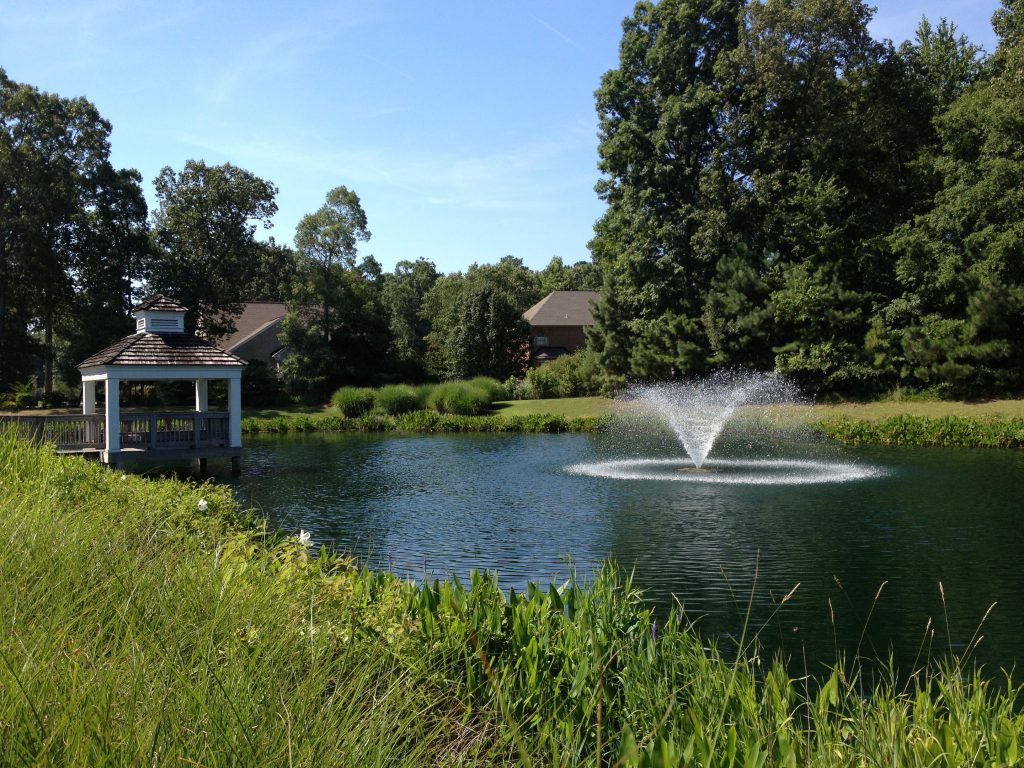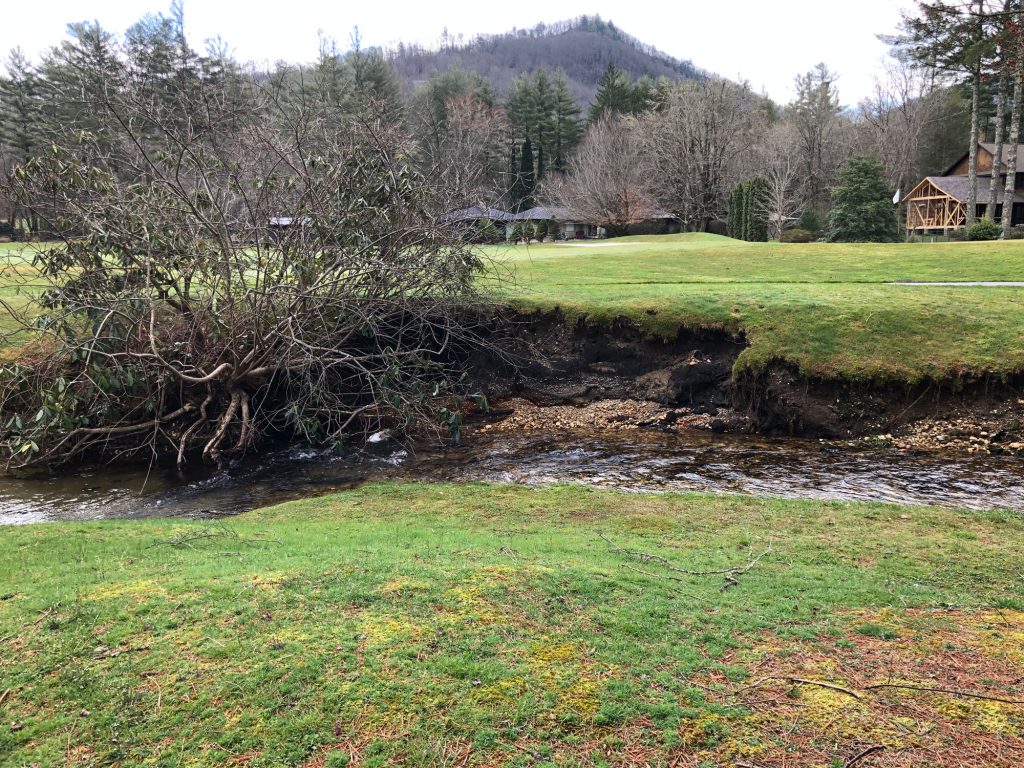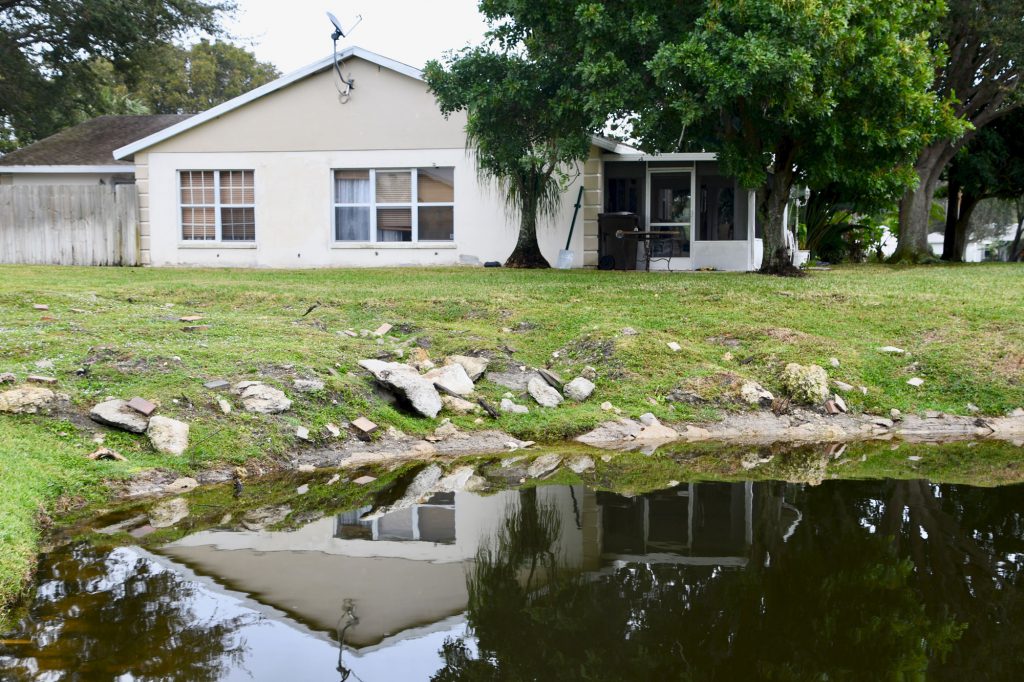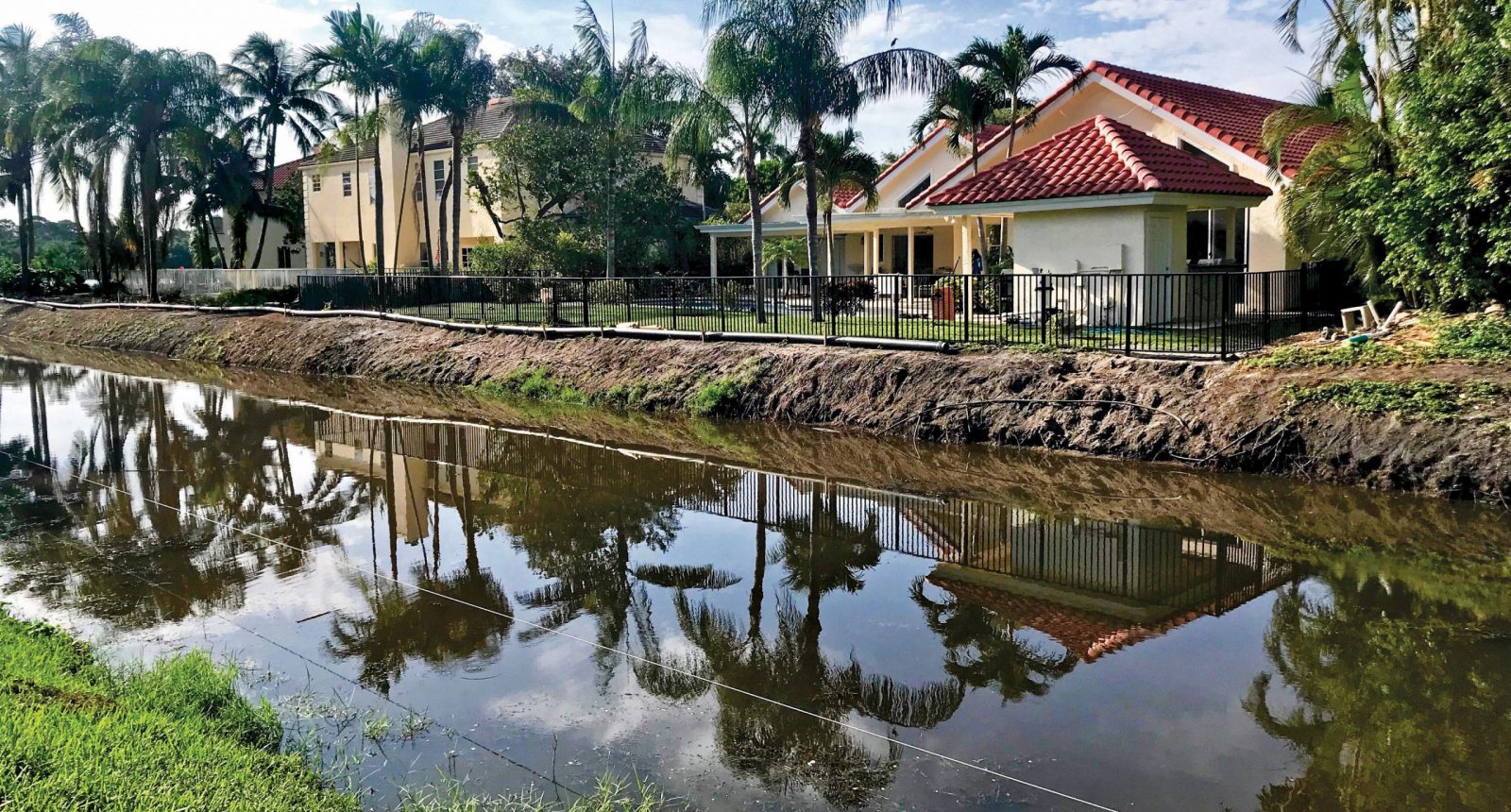
The 4 Main Causes of Erosion in Lake Soil
Many communities feature lakes and ponds that improve their property’s value and aesthetic appeal, and offer residents a connection with nature – whether that’s through fishing, bird watching, canoeing, or morning jogs around the water. Likewise, most of these water resources play a crucial role in the collection of stormwater to prevent flooding. An important part of keeping these waterbodies clean and functional is shoreline management.
Shorelines around many stormwater ponds are required to maintain slopes that are no steeper than four feet horizontal to one foot vertical. However, the natural erosion of these lake banks is inevitable, which can threaten compliance and the safety of community members.
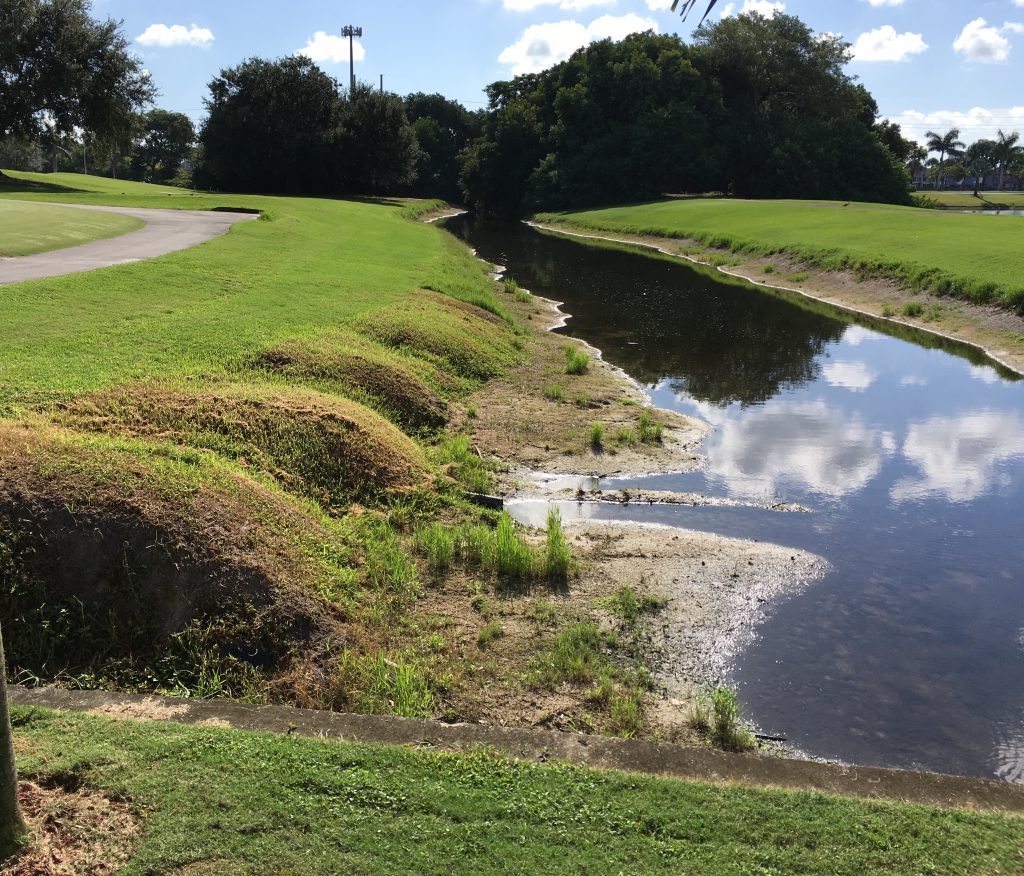
What Are the 4 Main Causes of Erosion in Lakes?
Water itself can be incredibly destructive. We can see this on a grand scale, as rivers have carved out canyons and move mountains. We also see this on a much smaller scale as the water of lakes and ponds routinely brushes up against their shorelines. Even on a calm day, wave action can move soil into the water.
Lake and pond erosion can be caused for many reasons, ranging from natural causes to weather to the presence of nuisance or invasive species. Some causes generally occur over long periods of time and can be difficult to control. Conversely, other causes of erosion stem from human activities, such as urban development and excess recreation, which tend to accelerate shoreline erosion. Understanding these contributing factors aids in the creation of a comprehensive remediation plan.
1. Weather and Climate
Natural weather events, such as more frequent or more intense rainfall, can increase erosion, causing shorelines to crumble and deteriorate. Stronger storms, faster runoff velocity, and higher water levels also increase the levels of suspended sediment in waterbodies. This change in the distribution of sediment can threaten invertebrates, fish, and especially aquatic vegetation.
Unchecked increases in sediment and erosion in large lakes can also have a negative effect on water quality and the availability of drinking water sources. For instance, increased sedimentation can impact the storage capacity in reservoirs and increase the need for treatment by water utilities. These conditions require significant management efforts to reverse and prevent.
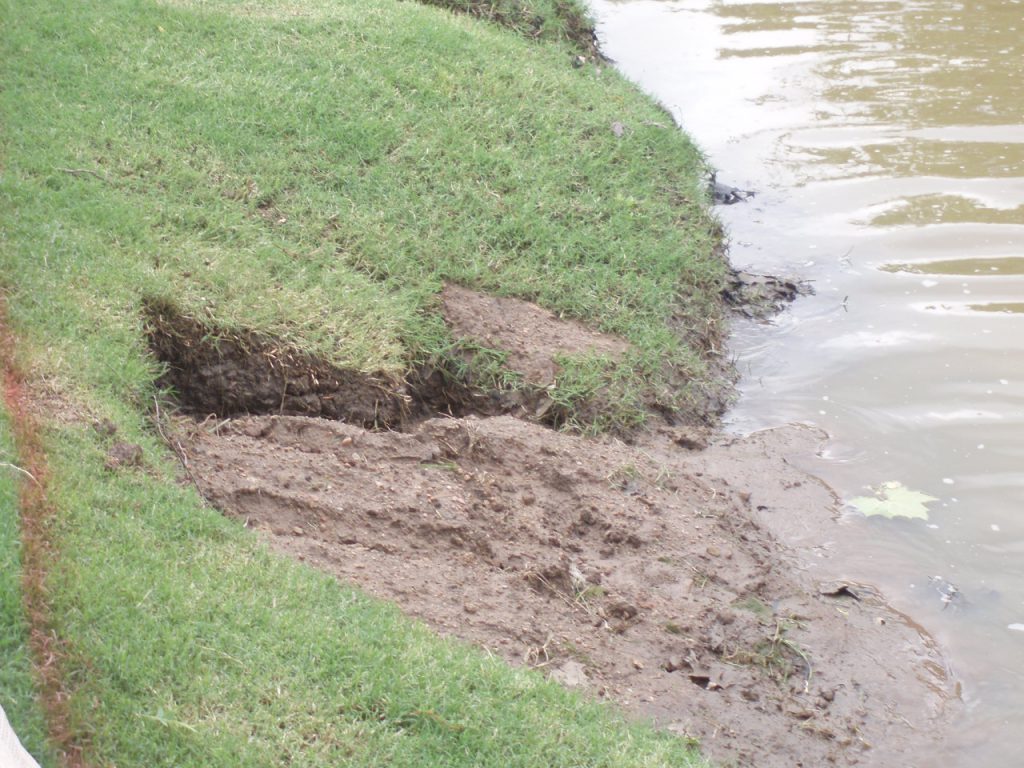
2. Topography and Tectonic Activity
The topography of the land can contribute to lake soil erosion. In steeper areas, runoff moves at a higher intensity and increased speed. This means even heavier and larger sediment particles can easily be carried by the moving water. Because of this, hilly areas face more soil erosion problems. The longer and steeper the slope of a lake or pond bank, the higher the risk of erosion. As the slope length increases and aids the accumulation of runoff water, soil erosion also increases.
Tectonic activity molds the shape of the landscape itself, thus influencing how erosion affects an area. For example, tectonic uplift may cause one part of the landscape to become higher than other parts of the landscape. This process generally occurs over hundreds of years, but may also take place over the span of a few decades – enough for any long-term homeowner to watch their property change.
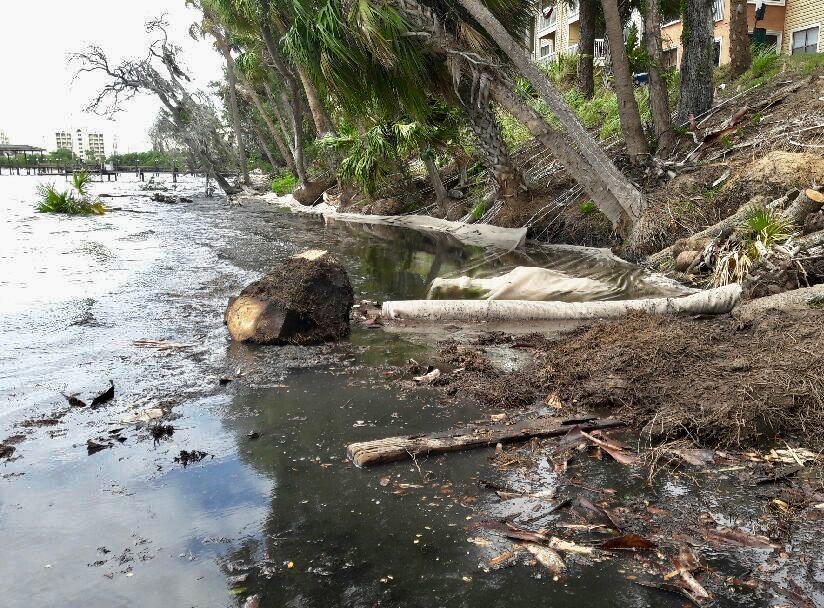
3. Human Activity
Human activity is a significant cause of lake soil erosion. When actions such as construction, logging, paving, farming, and even landscaping disturb the topsoil, they can increase the risk of erosion. Effects of human-caused soil erosion include:
- Level control structures – This can raise lake levels to an unnaturally high point on the shoreline where the soil is less able to withstand lake wave action.
- Stormwater runoff – When too much earth is paved over, these impervious surfaces around lakes collect and deliver precipitation over land rather than letting it infiltrate into the soil. This allows stormwater to pick up excess nutrients, trash, and other pollutants as it flows into the waterbody and create bad odors, algae, toxic cyanobacteria, nuisance aquatic plants, and bottom muck.
- Flooding – Lakes and ponds help contain water during rainstorms and weather events like hurricanes, but the more they fill with sediment, the less water they can hold. This is increasingly problematic as more of the land is paved over, preventing natural water filtration into the ground.
4. Loss of Vegetation and Trees
Homeowners often remove vegetation in order to create better views or gain access to the water. This destroys wildlife habitats and eliminates the shoreline stabilization provided by the root structures of plants, trees, and shrubs. Native plants help bind the soil together with their root systems, which means they’re able to serve as a protective layer that can help prevent erosion in several ways.
Plant cover protects the soil from the impact of heavy rains, which helps facilitate more effective soil absorption. In addition, firm plant placement impedes water flow as the stems create barriers that can uptake water. Once the protective vegetative cover is removed, land erosion occurs at a more destructive rate.
The effectiveness of plants for reducing erosion depends on the type and quantity of cover they provide. Native, flowering vegetation should completely cover the soil and grow in a thick, tall barrier 3-5 feet from the edge or a lake or pond. The appropriate plants can differ from state to state, so it’s important to confer with an aquatic specialist to identify the best species for your waterbody.
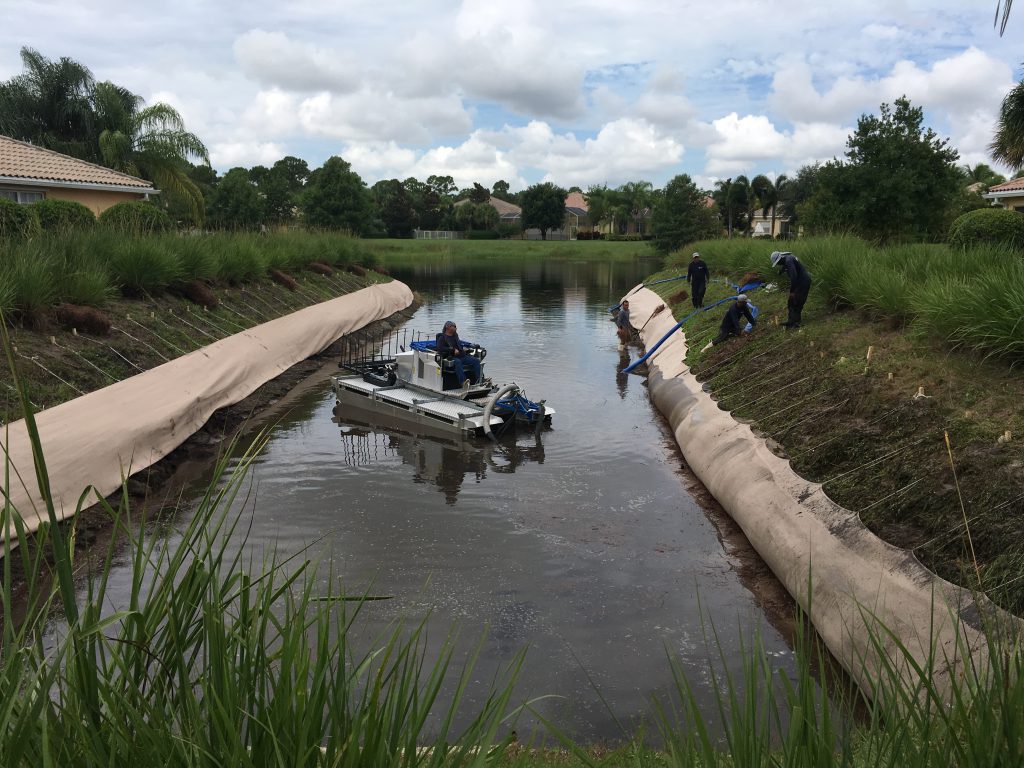
Creating a Proactive Management Plan
Yes, erosion is inevitable, but it isn’t a death sentence for your waterbody. Like all aspects of a lake or pond, the shoreline requires consistent monitoring and care to ensure its longevity. No matter your shorelines level of health, there are many solutions to restore strength, aesthetics, and water volume:
- Install a beneficial vegetative buffer
- Introduce riprap or coir logs
- Dredge bottom muck
- Achor shoreline with SOX Solutions
- Remove invasive, burrowing wildlife
- Build protective barriers
Every shoreline is different and requires unique erosion control solutions. Contact your professional lake manager to learn about the many options available.
Erosion Repair: Bioengineered Living Shorelines
SOLitude Lake Management is a nationwide environmental firm committed to providing sustainable solutions that improve water quality, enhance beauty and preserve natural resources.
SOLitude’s team of aquatic scientists specializes in the development and execution of customized lake, stormwater pond, wetland and fisheries management programs. Services include water quality testing and restoration, algae and aquatic weed control, installation and maintenance of fountains and aeration systems, shoreline erosion control, muck and sediment removal and invasive species management. SOLitude partners with homeowners associations, golf courses, private landowners, businesses and municipalities. SOLitude Lake Management is part of Rentokil, a leading business services company, operating across the United States, Canada and Puerto Rico.
For more information, visit SOLitude Lake Management at solitudelakemanagement.com, and connect on Facebook, LinkedIn and Twitter.








